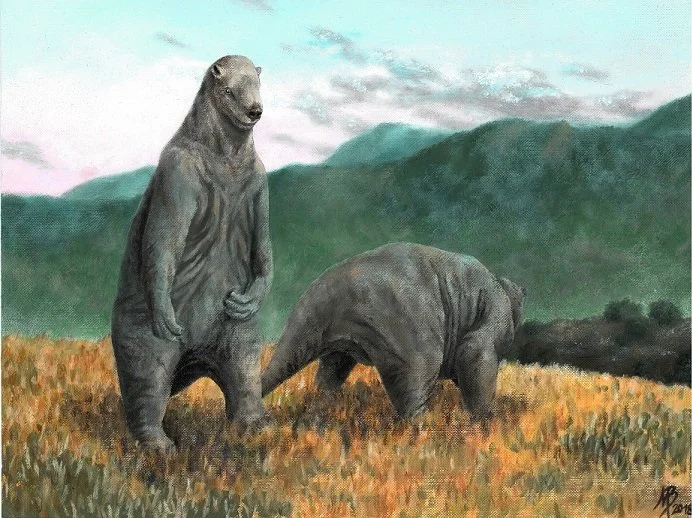How are sloths not extinct yet from natural selection?
The short answer
Sloths' slow movement may seem like an evolutionary disadvantage, but it is actually one of their greatest strengths. Sloths survive because they require very little food, and their skinny, bony bodies are not attractive to most predators. This unique combination of traits has allowed sloths to avoid extinction for thousands of years.
The long answer
Long before the sloths we know today inched along tree branches, there were giant sloths that roamed on the ground in North, Central, and South America. These included a variety of ground sloths species, the largest being Megatherium which stood 22 feet tall and weighed 14,000 pounds.
Unlike modern sloths, these giant ground sloths moved around considerably more and could even walk on their hind legs, freeing their arms for digging or defending themselves from predators.
"Megatherium americanum Marcus Burkhardt" by Marcus Burkhardt is licensed under CC BY 3.0
Elephant-sized sloths, like the Megatherium, were driven to extinction likely due to a combination of climate change and human activity. The theory goes that when humans arrived, they used tools to hunt these giant ground sloths. The sloths that managed to survive did so by adapting to a more arboreal lifestyle, using their long claws to climb trees and stay out of reach.
So that explains why today's sloths hang out in trees so much, but why are sloths so slow?
For modern sloths, evolution was not a story of "survival of the fittest" but more like "survival of the least desirable". Sloths have extremely slow metabolisms, allowing them to survive on minimal amounts of food. This slow metabolic rate results in very slow movement, conserving energy and preventing the development of significant muscle mass. In fact, a sloth's muscles make up only 25-50% of their total body weight, whereas most mammals are 40-45% muscle mass. Sloths are still alive because it’s simply not worth the hassle for most predators to hunt sloths – so most don't.
“Sloth In Costa Rica” by Marimar Ortiz is licensed under CC BY 3.0.
An added bonus to the sloth's survival strategy is the blue-green algae that grow in their fur, giving them a greenish tint. This natural camouflage helps them blend into the trees, further protecting them from predators.
So, why are sloths not extinct? It's because of their unique adaptations: slow movements, hanging from trees, low muscle mass, and an incredibly slow metabolism. These traits have allowed them to survive for millions of years, even as many other species have come and gone.
Curious about how the world works?
Today You Should Know is a free, weekly email newsletter designed to help you learn something new every Friday.
Subscribe today 👇
Sources
Black, R. (2021, January 3). The sloth's evolutionary secret. National Geographic. Retrieved November 7, 2022, from https://www.nationalgeographic.com/science/article/the-sloths-evolutionary-secret
Holdrege, C. (1998). What does it mean to be a sloth? The Nature Institute. Retrieved November 7, 2022, from https://www.natureinstitute.org/article/craig-holdrege/what-does-it-mean-to-be-a-sloth
Mason, B. (2005, August 1). Humans drove giant sloths to extinction. Science. Retrieved November 7, 2022, from https://www.science.org/content/article/humans-drove-giant-sloths-extinction
National Science Foundation. (n.d.). Jefferson's Ground Sloth, Megalonyx jeffersonii. Illinois State Museum. Retrieved November 7, 2022, from https://iceage.museum.state.il.us/mammals/jefferson%E2%80%99s-ground-sloth
Sloth Sanctuary of Costa Rica. (n.d.). Extinct Giant Ground Sloths. Sloth Sanctuary of Costa Rica. Retrieved November 7, 2022, from https://www.slothsanctuary.com/about-sloths/giant-ground-sloth
Smithsonian Institution . (2020, October 18). Why are Sloths So Slow? And Other Sloth Facts. Smithsonian’s National Zoo & Conservation Biology Institute. Retrieved November 7, 2022, from https://nationalzoo.si.edu/animals/news/why-are-sloths-so-slow-and-other-sloth-facts


